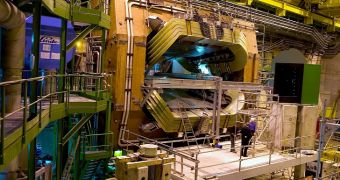Antimatter is the exact opposite of matter, the same particles with their charge switched around. That's the popular view, but it's not quite accurate. Not all particle/antiparticle pairs are exact opposites.
There are what is called CP (charged parity) violations, slight differences between a particle and its antimatter counterpart.
One of the experiments at the Large Hadron Collider, the LHCb (LHC beauty) experiment has now provided conclusive evidence of CP violations in the Strange B (Bs) meson, something that hasn't been observed to date.
The Bs meson is composed of a bottom antiquark and a strange quark. Its antiparticle is made up of a bottom quark and a strange antiquark.
The LHCb experiment has shown, with a five sigma degree of certainty, that the decay of the neutral Bs meson has a preference for matter, that is, it's slightly more likely that matter particles will be produced in the decay than antimatter particles.
This asymmetry is very small, which is why the LHC and the massive amount of data it can generate was needed, but it is there.
Like the other CP violations observed so far, in kaons in 1964 and in B mesons more recently, this is not enough to account for the massive discrepancy in the amount of matter compared to antimatter that exists in the universe, but it is a step forward.

 14 DAY TRIAL //
14 DAY TRIAL //